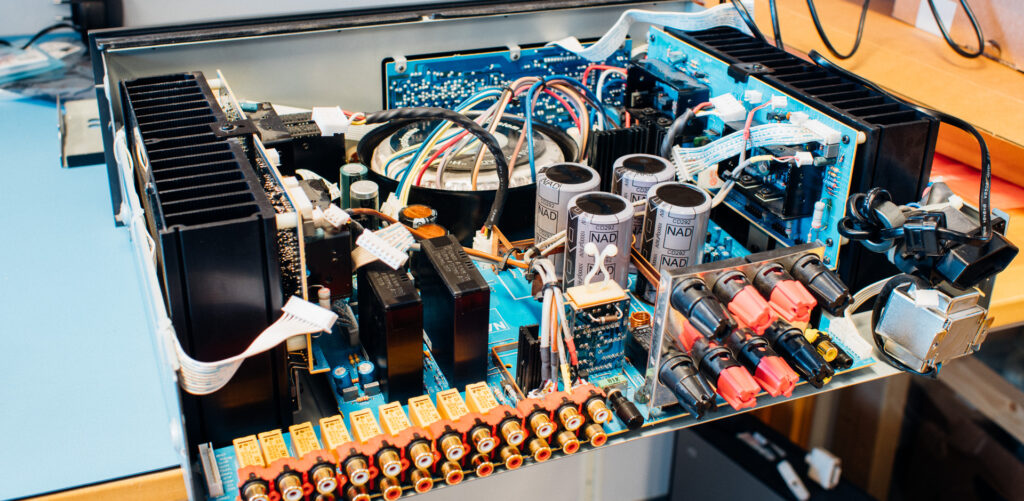Amplifier Repair: A Comprehensive Guide to Troubleshooting and Maintenance
I. Introduction
- Brief overview of what an amplifier is and how it works
- Importance of proper maintenance and repair
II. Common Problems with Amplifiers
- No Sound
- Distorted Sound
- Low Output
- Hum or Buzz
- Overheating
III. Troubleshooting Amplifier Problems
- Step-by-step process for identifying and diagnosing problems
- Common tools and equipment needed for troubleshooting
IV. Repairing Amplifier Problems
- Step-by-step process for repairing common amplifier problems
- Common tools and equipment needed for repair
- Tips for working safely with electronics
V. Maintenance Tips for Amplifiers
- Regular cleaning and upkeep
- Tips for preventing common problems
- How often to service your amplifier
VI. Conclusion
- Importance of proper maintenance and repair for amplifier longevity and performance

I. Introduction
An amplifier is an electronic device that increases the amplitude of an electrical signal. Amplifiers are commonly used in audio systems to increase the power of a sound signal so that it can be heard at a higher volume. Amplifiers are also used in other electronic devices, such as radios, televisions, and musical instruments. Proper maintenance and repair of amplifiers is essential for maintaining their performance and preventing costly damage.
II. Common Problems with Amplifiers
There are several common problems that can occur with amplifiers. These include no sound, distorted sound, low output, hum or buzz, and overheating. Each of these problems can have several causes, such as loose connections, faulty components, or incorrect settings. Identifying the problem is the first step in repairing an amplifier.
III. Troubleshooting Amplifier Problems
Troubleshooting an amplifier involves a step-by-step process of identifying and diagnosing the problem. This process typically involves checking connections, testing components, and using a multimeter to measure voltage and current. Common tools and equipment used for troubleshooting include a multimeter, soldering iron, and screwdrivers.
IV. Repairing Amplifier Problems
Once the problem has been identified, the next step is to repair the amplifier. Repairing an amplifier typically involves replacing faulty components, repairing connections, or adjusting settings. Common tools and equipment used for amplifier repair include a soldering iron, desoldering pump, and replacement components. It’s important to work safely with electronics and to follow proper procedures when repairing an amplifier.
V. Maintenance Tips for Amplifiers
Regular maintenance is essential for preventing problems with amplifiers. This includes keeping the amplifier clean and free of dust, checking connections regularly, and replacing components as needed. It’s also important to keep the amplifier in a well-ventilated area to prevent overheating. Many amplifiers benefit from periodic servicing, which can include cleaning, lubricating, and adjusting settings.
VI. Conclusion
Proper maintenance and repair of amplifiers is essential for maintaining their performance and preventing costly damage. By following the troubleshooting and repair procedures outlined in this article and by regularly maintaining your amplifier, you can ensure that it performs well and lasts for many years.
For more information about Amplifiers Repair- https://www.anygadgetrepair.co.uk/audio-hifi-repairs.html
